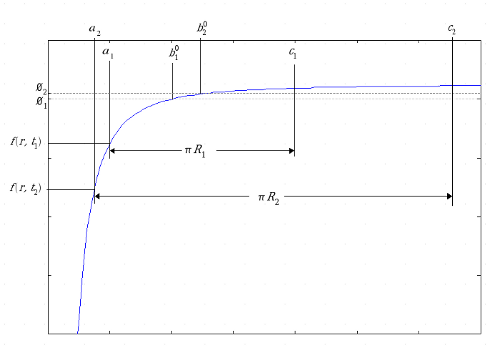This Statement of the Problem is an incomplete paper and so has variations. Mostly corrections of typos and/or sophisms are made, with changes in language to improve clarity. As a result, it is dubious it could even be understood as is, a mere collection of thoughts. The fundamental emphasis of the problem is the following.
To vary, continuously over time changes:
1) the function values at some function maximum, an.
2) the derivatives values at an,
While, keeping constant:
3) the integrals, between the upper and lower limits of the domain: set to unity.
4) the intervals -the distance between an and b0, ie. b0-an=1: set to unity.
5) the function values at some b0, ie. f(b0)=0.
Figure: A collection of matter, f(r, t1) contracts to f(r, t2) driving Universe expansion from R1 to R2 .
The purpose of the study is to exploit as many gravitational parameters as reasonably possible, while simultaneously applying as many reasonable constraints in as many possible combinations -of both hypothetical and standard variables- so that ultimately, the apparent orbital motions of galaxies can be most simply explained: “most simply explained” meaning both as 1) a more representative, and corresponding measure of the observables: observed redshifts and observed apparent magnitudes in relation to observed matter with respect to its observed orbital motions, and 2) with a more reasonable, or, at least, equally reasonable, set of assumptions as Big Bang Theory, Inflation, Dark Matter, and other theories.

